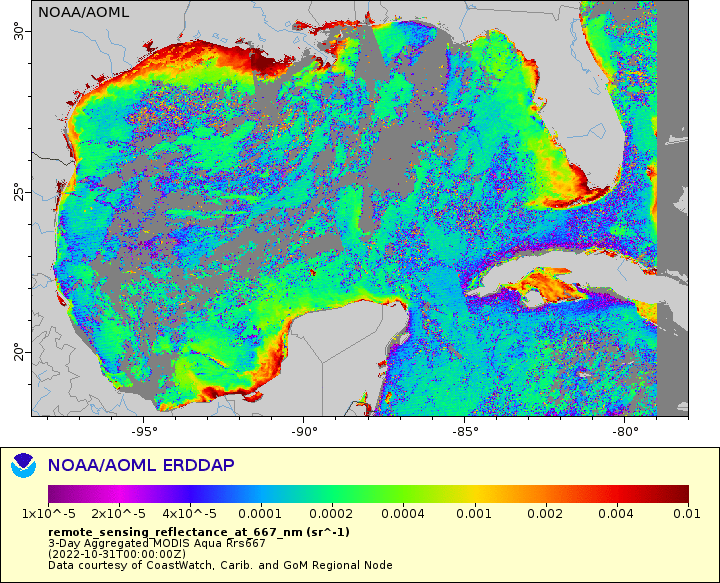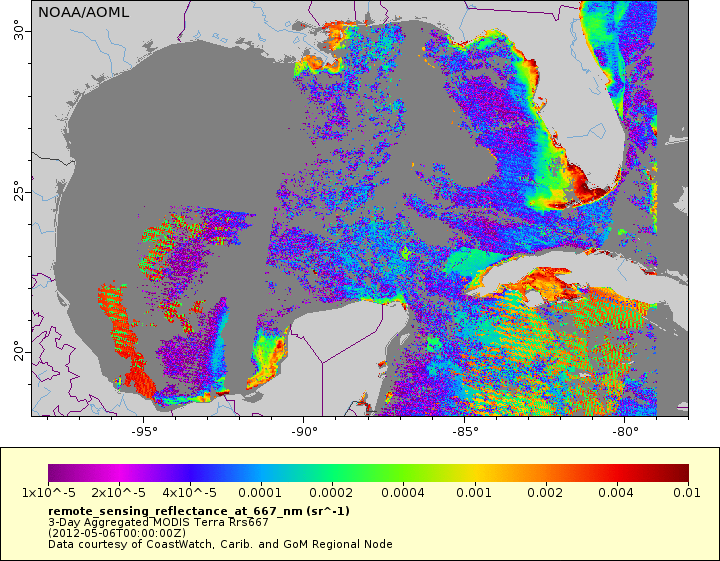The map below shows the ocean color (Rrs667) fields in the Gulf of America using a 3-day composite of MODIS/Aqua data from CoastWatch Caribbean Regional Node. This 36-band satellite sensor is a primary source of ocean color data since its launch in May 4th, 2002. Gray areas indicate regions covered by clouds obscuring the view of the ocean surface from the satellite sensors.

